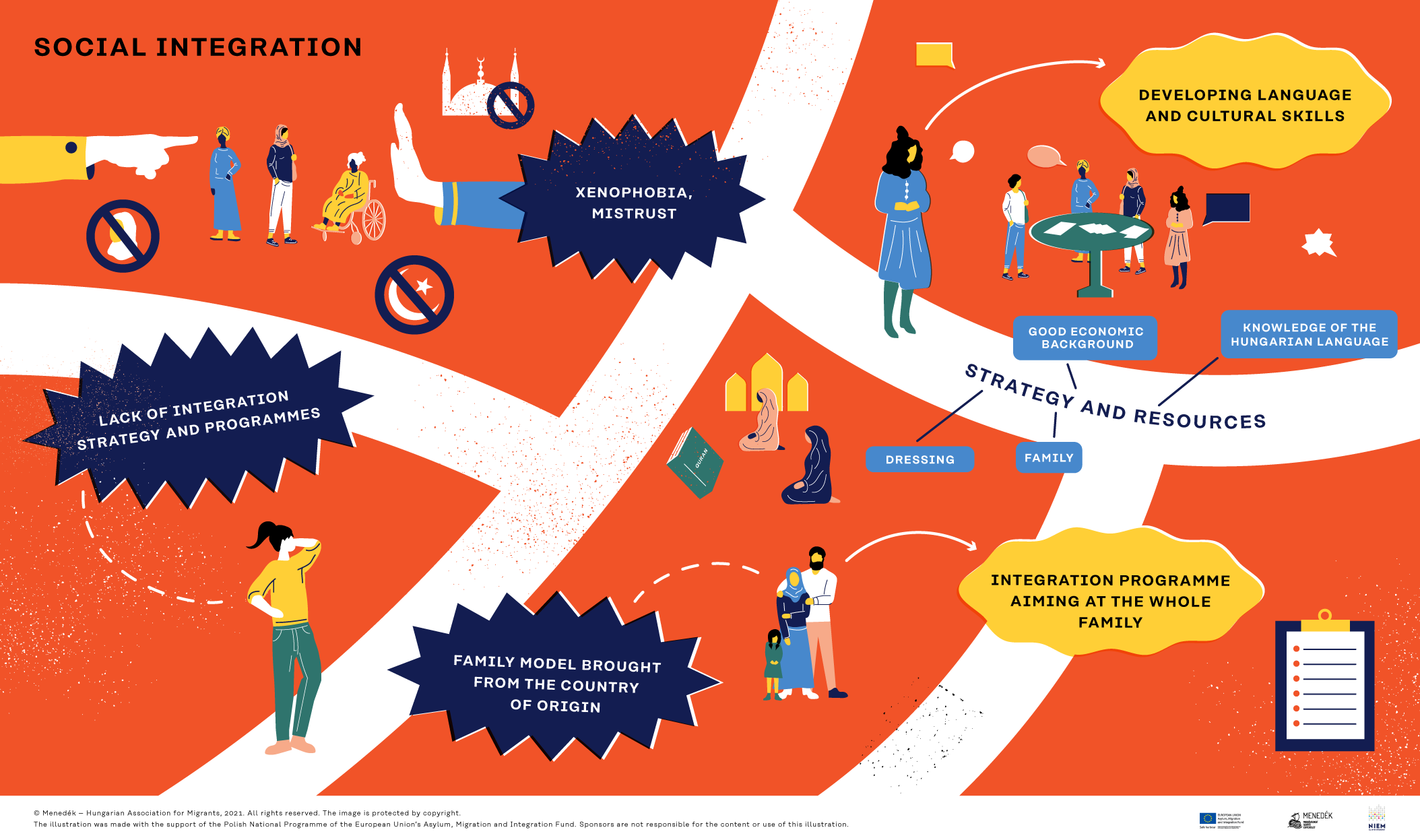
Hungary does not have a valid and de facto integration strategy. Although a strategic document was issued in 2013 in line with the expectations of the European Union, which envisaged the creation and implementation of integration plans, it was valid until 2020 and it was only partially implemented - one of its most important results, the institution of the integration treaty developed in 2014 was abolished in 2016. Yet people from third countries enjoying international protection are somehow integrated into the fabric of society. The study examines a special group, Muslim women.
Although, at the legislative level, domestic legislation harmonizes with the European Union's migration policy, material and social resources are not, or only to a limited extent, available to beneficiaries of international protection. There are no state integration programs, nor is there any economic security that would make settling in Hungary attractive. Due to the small number of long-term immigrants in Hungary, no larger ethnocultural communities have developed, and thus the institutional system serving them has not been established either.
A significant proportion of Muslim women from third countries enjoying international protection face many difficulties in terms of integration. Such are the growing xenophobia in society and Islamophobia. A patriarchal family model brought from the country of origin can also prevent them from forming direct relationships with members of the majority society on their own. It is common for a Muslim woman to integrate into the Muslim community in Hungary but not become an active member of the majority society. This phenomenon is called segmented assimilation in the literature.
At the same time, Muslim women living in Hungary have their own strategies and resources for integration. Resources can be:
- the family of origin and reproduction, which typically plays a helping and supportive role.
- good financial background, and
- knowledge of the Hungarian language, but there is some contradiction between the latter two factors: poorer women who are forced to work learn Hungarian faster than the more affluent, who typically stay at home with their children.
- Dressing according to Muslim standards promotes segmented assimilation into the local ethnocultural and religious community (the role of mosque attendees can be important), while European dressing is useful for the integration of the majority society.
- The help of acquaintances, colleagues and, to some extent, neighbors and co-workers can also be significant. The relationship of the women interviewed in the research with Hungarian colleagues and neighbors was particularly positive.
Muslim women living in Hungary are often most easily reached through their husbands and children and neighbors. Therefore, it is important, also in terms of integration, to focus on organizing programs that involve the family and the community in which they live. As a further step, free Hungarian language education supported by local governments and a change in the attitude of the majority society can also help integration.
